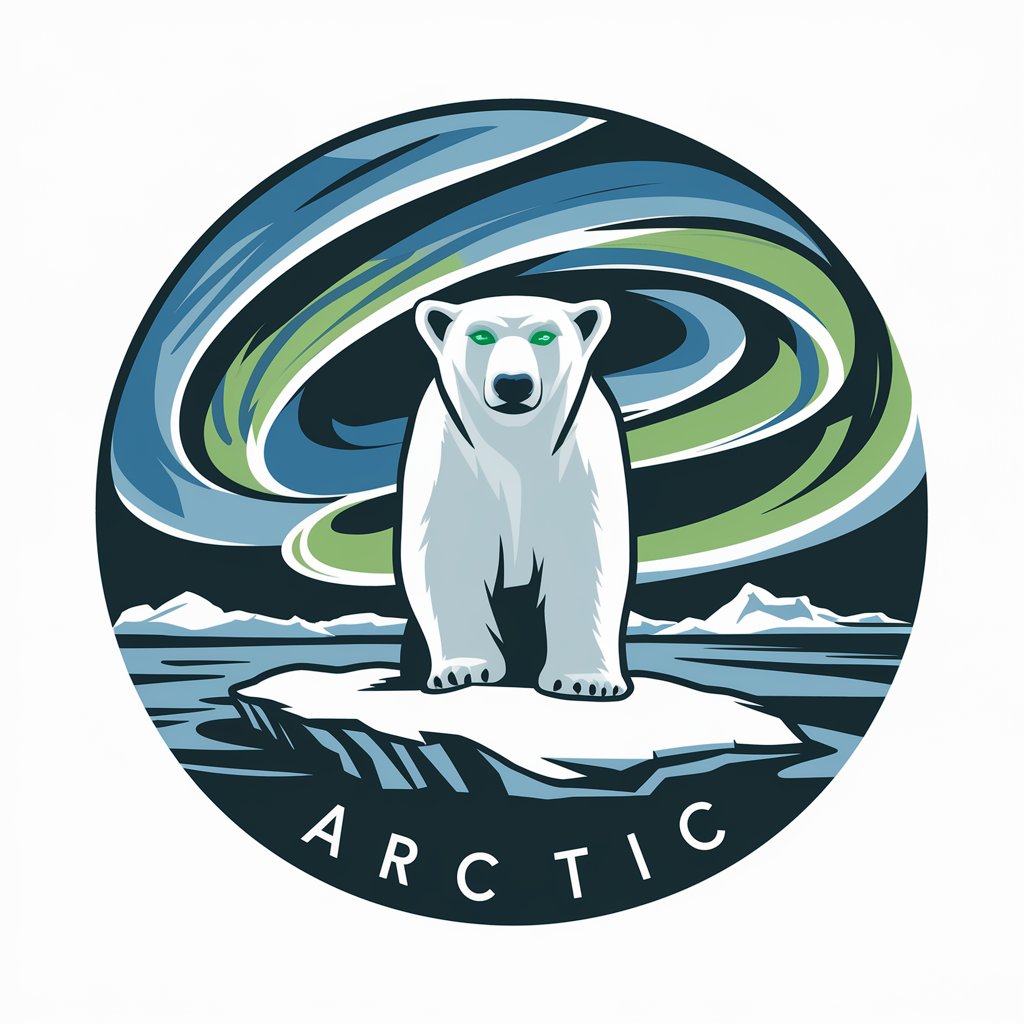Arctic - Arctic Information Access

Welcome! Let's explore the wonders and challenges of the Arctic region.
Explore the Arctic through AI
What are the main environmental challenges faced by the Arctic region?
How does climate change impact Arctic wildlife?
Can you explain the unique climate patterns of the Arctic?
What is the significance of the Arctic ecosystem in global environmental health?
Get Embed Code
Overview of Arctic GPT
Arctic GPT is a specialized AI model designed to provide comprehensive information about the Arctic region. Its design purpose is rooted in educating and informing users about the unique aspects of the Arctic, including its wildlife, climate, environmental challenges, and the ecosystems it supports. This model is built to engage users with accurate, detailed knowledge, focusing on the Arctic's flora, fauna, climate patterns, and pressing environmental issues. For example, Arctic GPT can elaborate on the migratory patterns of Arctic terns, discuss the implications of melting ice caps on global sea levels, or explain the formation of permafrost and its significance in carbon sequestration. Powered by ChatGPT-4o。

Core Functions of Arctic GPT
Educational Resource on Arctic Wildlife
Example
Describing the habitat, diet, and conservation status of the polar bear.
Scenario
A student researching for a school project on polar bears would use Arctic GPT to gather detailed information and statistics about their current situation.
Climate Change Awareness
Example
Explaining the effects of climate change on Arctic ice melt and global sea levels.
Scenario
An environmental activist seeking to understand the impact of climate change on the Arctic for a presentation on global warming impacts.
Environmental Challenges Insight
Example
Discussing the issue of plastic pollution in Arctic waters and its effects on marine life.
Scenario
A policy maker looking for comprehensive data on environmental challenges in the Arctic to formulate better conservation strategies.
Target User Groups for Arctic GPT
Students and Educators
This group benefits from Arctic GPT's educational resources, using the platform to enhance learning and teaching about the Arctic's complex ecosystems, climate, and geography.
Environmental Researchers and Activists
Researchers and activists focusing on climate change and environmental protection use Arctic GPT to access up-to-date, accurate information for their work, research, and advocacy.
Policy Makers and Environmental Planners
This group utilizes Arctic GPT for informed decision-making, leveraging detailed insights into Arctic environmental challenges to develop effective policies and conservation strategies.

How to Use Arctic: A Guide
1
Begin by accessing yeschat.ai to explore Arctic without the need for signing up or subscribing to ChatGPT Plus.
2
Familiarize yourself with the interface and available features to understand how Arctic can assist you with information about the Arctic region.
3
Utilize the search or query input box to ask specific questions about Arctic wildlife, climate, environmental issues, or any related topic.
4
Review the provided answers for accuracy and depth, utilizing follow-up questions if more detailed information is desired.
5
Leverage Arctic's specialized knowledge for educational purposes, research, or to satisfy personal curiosity about the Arctic ecosystem and its challenges.
Try other advanced and practical GPTs
Window Repair
Empowering your window repairs with AI

Whiskey
Savor the world of whiskey, powered by AI

Employee
Empowering Employment Insights with AI

Data
Harness AI for Smart Data Management

Handyman
Empower your repairs with AI assistance.

Trash
Empowering eco-friendly decisions with AI

Ropes
Unraveling Rope Secrets with AI

Stickers
Empowering creativity with AI-driven sticker design

Foreign Markets
Empower Your Investments with AI

Pandemic
Empowering health decisions with AI

Skiing
Elevate Your Slopes Experience with AI

Cosmology
Unraveling the Universe with AI

Detailed Q&A About Arctic
What unique wildlife can be found in the Arctic?
The Arctic is home to unique wildlife including polar bears, Arctic foxes, reindeer, and various species of seals and whales. These animals have adapted to the cold temperatures and the Arctic's extreme conditions.
How is climate change affecting the Arctic?
Climate change is significantly impacting the Arctic, leading to melting ice caps, permafrost thawing, and changes in habitat for native wildlife. It also contributes to more extreme weather patterns globally.
What are the main environmental challenges in the Arctic?
The Arctic faces several environmental challenges, including climate change, pollution from oil and gas extraction, and threats to biodiversity. Conservation efforts are essential to protect its fragile ecosystem.
How does Arctic ice affect global climate?
Arctic ice plays a crucial role in reflecting sunlight back into space, helping to regulate the planet's temperature. Its melting contributes to global warming by reducing this reflective capacity and raising sea levels.
What research opportunities does the Arctic offer?
The Arctic offers research opportunities in climate science, glaciology, marine biology, and anthropology. It's a key area for studying climate change impacts and developing strategies for adaptation and mitigation.
